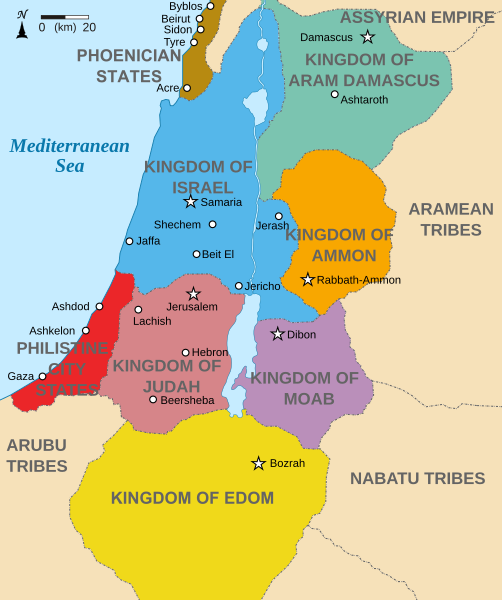After their encampment at Mt Sinai for a year, I believe the Israelites spent the vast majority of their 40 year sojourn at Kadesh.
Deut 1:46 says they stayed at Kadesh for a long time.
Deut 1:46 (BSB)
46 For this reason you stayed in Kadesh for a long time – a very long time.
Deut 2:14 implies they were at Kadesh for 38 years.
Deut 2:14 (KJV)
14 And the space in which we came from Kadesh-barnea, until we were come over the brook Zered, [was] thirty and eight years; until all the generation of the men of war were wasted out from among the host, as the LORD swore unto them.
Num 33 is the exhaustive list of the places they stayed at during the Exodus journey. After leaving Kadesh, the next event is Aaron dying at Mount Hor in the 40th year.
https://en.wikipedia.org/wiki/Stations_of_the_Exodus
Num 33:36-38 (ESV)
36 And they set out from Ezion-geber and camped in the wilderness of Zin (that is, Kadesh).
37 And they set out from Kadesh and camped at Mount Hor, on the edge of the land of Edom.
38 And Aaron the priest went up Mount Hor at the command of the LORD and died there, in the fortieth year after the people of Israel had come out of the land of Egypt, on the first day of the fifth month.
So, the Exodus is not how it’s typically imagined that they were continuously wandering in the wilderness for 40 years, but they were only wandering for 2 years and encamped at Kadesh for 38 years.
Because the Israelites spent thirty-eight years encamped at Kadesh-barnea, a number of important events took place there.
https://www.compellingtruth.org/Kadesh-barnea.html
It is highly likely that, for most of the next thirty-eight years, the Israelites lived at the large oasis of Kadesh Barnea, from where they spread out to neighbouring oases to pasture some of their flocks.
https://www.thebiblejourney.org/biblejo … sh-barnea/
Though many hold Kadesh was at Tell el-Qudeirat, I lean towards the position that it was at Petra, which was what Josephus wrote.
Josephus identifies Miriam’s burial site (which the Bible identifies as Kadesh) with Petra, which he called Rekem.
https://en.wikipedia.org/wiki/Kadesh_(biblical)
And when he came to a place which the Arabians esteem their metropolis, which was formerly called Arce, but has now the name of Petra: at this place, which was encompassed with high mountains, Aaron went up one of them, in the sight of the whole army: Moses having before told him that he was to die: for this place was over against them.
https://penelope.uchicago.edu/josephus/ant-4.html
It is our conclusion that Kadesh Barnea is located Transjordan at Petra between El Beidha and Basta.
https://www.bible.ca/archeology/bible-a … barnea.htm
Petra also fits with Moses striking the rock and giving the people water.
Num 20:1-2 (KJV)
1 Then came the children of Israel, [even] the whole congregation, into the desert of Zin in the first month: and the people abode in Kadesh; and Miriam died there, and was buried there.
2 And there was no water for the congregation: and they gathered themselves together against Moses and against Aaron.
The topography of Petra is that of a gigantic semicircle of rock that channels both spring-water and winter floodwater downwards and along a series of natural fissures. Left alone, these streams and surges of precious water simply vanish into the sand. But if the rock is reconfigured by hydraulic engineers, the water may be directed into cisterns, accumulating the trickles from the springs and holding the winter floods captive so as to provide a supply through the long, hot, dry summer months.
https://www.world-archaeology.com/featu … -of-petra/
Moses asked the king of Edom passage through their country along the King’s highway.
Num 20:16-17 (KJV)
16 And when we cried unto the LORD, he heard our voice, and sent an angel, and hath brought us forth out of Egypt: and, behold, we [are] in Kadesh, a city in the uttermost of thy border:
17 Let us pass, I pray thee, through thy country: we will not pass through the fields, or through the vineyards, neither will we drink [of] the water of the wells: we will go by the king’s [high] way, we will not turn to the right hand nor to the left, until we have passed thy borders.
The King’s highway runs from the Gulf of Aqaba to the Dead Sea.

https://commons.wikimedia.org/wiki/File … routes.png
Here is a map of the region of Edom around 830 BC when it was at its height:

https://commons.wikimedia.org/wiki/File … 30_map.svg
So, the Biblical account matches the King’s highway and at the edge of the Edomite territory with Petra.
Petra is surrounded by other nearby towns, one of them is called Wadi Musa.
Wadi Musa means “Valley of Moses” in Arabic. It is said that Moses passed through the valley and struck water from the rock for his followers at the site of Ain Musa (“Moses Spring” or “Moses’ Well”) The Nabateans built channels that carried water from this spring to the city of Petra. Wadi Musa was also nicknamed the “Guardian of Petra”. The Tomb of Aaron, the traditional burial site of biblical Aaron, the brother of Moses, is on nearby Jebel Harun, a strong candidate for biblical Mount Hor.
https://en.wikipedia.org/wiki/Wadi_Musa
Though Petra is a popular tourist destination, it has largely been unexcavated.
Despite all the publicity and the parade of tourists, much of Petra remains untouched by archaeologists, hidden under thick layers of debris and sand built up over the centuries. No one has found the sites of the busy marketplaces that must have dotted Petra.
https://www.smithsonianmag.com/history/ … 155444564/
https://debatingchristianity.com/forum/viewtopic.php?p=1081205#p1081205
